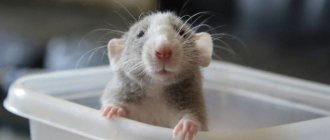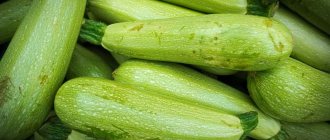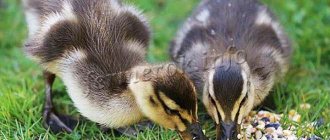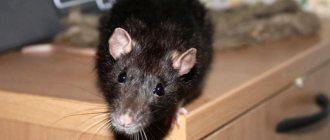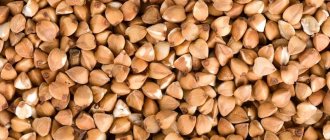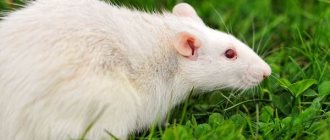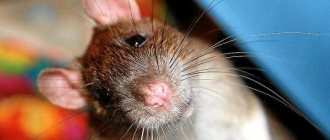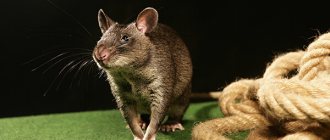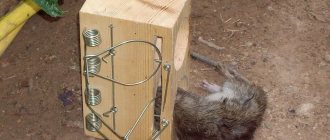- home
- Rat
- Nutrition
08/30/2019 Recently, the rat has been gaining popularity as a pet. She is easy to train, so she can entertain family members with unusual tricks. The animal needs care and proper care. Therefore, a caring owner should know what to feed a pet rat.
Nutrition of domestic rats
Rats have a good appetite. They are similar to humans in their food preferences. Rodents are omnivores, but before they start eating something, they choose the most delicious one. In connection with this feature, a caring owner needs to be more attentive to creating a menu for the pet. The diet of a pet animal must be balanced. The animal is prone to excess weight, so you should not abuse fatty foods. The lifespan of obese animals is much shorter than that of healthy ones. Fat rodents often get sick due to disruption of the gastrointestinal tract, so they need to be fed properly.
Authorized Products
The owner needs to know what to feed a decorative rat at home. The main product of a balanced diet is grain. You can buy grain food at a pet store or assemble it yourself. It is not recommended to purchase special food for animals in unverified stores, because... they may be treated with chemicals. Mixtures for rodents are divided into three categories, their difference lies in price and quality:
- Economy class food. The mixture consists of grain and grass granules. The granules have no nutritional value for rodents. For domestic rats, add sunflower seeds or nuts to the food. Protein foods should be given as a supplement to the mixture.
- Premium food. The mixture contains rye and oats instead of expensive wheat. Due to the increased fat content, it is necessary to dilute the feed with additional purchased grain. To ensure that your pet receives microelements, proteins are included in the menu.
- Super premium food. All ingredients are balanced and contain animal protein. The fat content of the mixture is no more than 10%.
List of foods allowed for consumption by pet rats:
- Green food: lettuce, parsley, plantain, dill. Excess of succulent food leads to disruption of the gastrointestinal tract.
- A complex of vitamins consisting of specialized nutritional supplements and fish oil.
- The rat eats corn, wheat, and oatmeal. They are a source of vitamin E. In winter, millet, barley and sunflower seeds should be given.
- Specialized chalk and stones as mineral supplements.
- Dairy products with a low fat content are suitable for feeding baby rats. Fermented milk products have a positive effect on digestion. For example, kefir, cottage cheese and yogurt without adding dyes. Do not give milk and lactic acid products that have expired. They can cause serious poisoning. To avoid stomach problems, you should introduce dairy products gradually.
- Potatoes, cabbage and turnips should be given cooked to avoid gas formation in the animals.
- It is allowed to feed your pet rat boiled beef, chicken and pork. You can add meat food for cats or bones, crushed into powder, to the diet. It is recommended to feed a lactating rat with meat. Meat products should not be given raw.
- Fish should not be fatty. When cooking, do not use salt or spices.
- You can give any type of nuts except almonds. Eating it in large quantities will lead to obesity.
- Raw pasta as dry food. It is recommended to add legumes, soy or lentils to them.
- You can include raspberries, blueberries, currants and strawberries in your pet's menu as treats.
- Hard-boiled quail eggs. Should be given once a week.
- Rodents can eat fruit. Before use, you should remove the seeds from them. They are a source of hydrocyanic acid, which is dangerous for rats. You can add dried fruits to your diet, such as raisins, dried apricots and prunes.
Diet of a domestic rat
The feeder should always be filled with grain, because... A domestic rat cannot go without food for a long time. You cannot feed a rat once a day, because... this will affect the functioning of the stomach. The animal is active at night, so it is necessary to leave more food at night. In some cases, fractional feeding is organized (meals in small portions):
- For babies up to six months old. Increase the amount of animal protein consumed;
- animals suffering from diseases of the gastrointestinal tract;
- an elderly rodent, if there is no predisposition to obesity.
Grain feed is given one tablespoon at a time. A healthy pet is fed fruits and vegetables in an amount of 10-12 g. If the animal suffers from loose stools, the rat should be fed a reduced amount. Fermented milk products and foods rich in protein are given no more than 2-3 times a week as complementary foods. They should not be mixed with each other; it is recommended to alternate similar foods. Each new product is introduced into the diet gradually, while the animal’s reaction is observed. For example, some pet rats love to eat dairy products but are lactose intolerant.
Description
Rats have an oval body shape and a stocky build, characteristic of most rodents. The body length of an adult rat ranges from 8 to 30 cm (depending on the species), the weight of the rat varies from 37 g to 420 g (individual gray rats can weigh up to 500 grams).
The rat's muzzle is elongated and pointed, its eyes and ears are small. The tail of most species is practically naked, covered with sparse hairs and ring scales. The black rat's tail is covered with thick fur. The length of the tail of most species is equal to the size of the body or even exceeds it (but there are also short-tailed rats).
The rodent's jaws contain 2 pairs of elongated incisors. Rat molars grow in dense rows and are designed for grinding food. Between the incisors and molars there is a diastema - an area of the jaw where teeth do not grow. Despite the fact that rats are omnivores, they are distinguished from predators by the absence of fangs. Animals' incisors need constant grinding, otherwise the rat simply will not be able to close its mouth. This feature is due to the absence of roots and the continuous growth of the incisors throughout the life of the animal. The front of the incisors are covered with hard enamel, but there is no enamel layer at the back, so the surface of the incisors is ground unevenly and takes on a characteristic shape reminiscent of a chisel. The teeth of rats are extremely strong and can easily gnaw through brick, concrete, hard metals and alloys, although they were originally intended by nature to eat plant foods.
Rats have poorly developed calluses on their paws, which are necessary for rodents to climb, but the functional deficiency is compensated by mobile fingers. Therefore, rats are capable of leading not only a terrestrial, but also a semi-arboreal lifestyle, climbing trees and making nests in abandoned hollows.
Rats are very active and resilient animals, they run well: in case of danger, the animal reaches speeds of up to 10 km/h, overcoming obstacles up to 1 meter high. A rat's daily exercise ranges from 8 to 17 km.
Rats swim and dive well, catch fish and can continuously stay in water for more than 3 days without harm to their health. Rats' vision is poor and has a small viewing angle (only 16 degrees), which forces the animals to constantly turn their heads. Rodents perceive the world around them in shades of gray, and the color red represents complete darkness for them.
Hearing and smell function well: rats perceive sounds with a frequency of up to 40 kHz (for comparison: humans up to 20 kHz), and detect odors at short distances. But rats tolerate the effects of radiation very well (up to 300 roentgens/hour).
The lifespan of a rat in the wild depends on the species: gray rats live about 1.5 years, rare specimens can live up to 3 years, black rats live no more than a year. In laboratory conditions, the life of a rodent increases by 2 times. According to the Guinness Book of Records, the oldest rat was 7 years and 8 months old at the time of death.
Food preferences
Every pet rat has its own favorite treat. Some animals prefer insects. They can be given mealworms, which can be purchased at your local pet store. Other rats love to eat sweets. They should not be abused, because... they are high in calories. It is better to use treats as a reward during the training process. They can also be given after medical procedures or during periods of illness. A tasty treat should be safe for your pet. Apples are suitable as a treat. It is forbidden to feed the rodent smoked sausages, alcohol, chocolate, carbonated drinks, canned goods and leaves of indoor plants.
Taming and training your pet
The first thing you need when training is a treat. As a treat, you can use a sunflower seed or a small piece of meat (eggs); you cannot use sweets. The first step is to gain the animal's trust in you. There are very sociable individuals who are happy to communicate with the owner, however, there are those who have difficulty making contact.
A rat can be trained to:
- Accustom to a nickname;
- Train to come running when you call;
- Train yourself to stand on your hind legs;
- Teach him to return to the cage at a certain time or at your request;
- Build her a mini-town and teach her to run up the stairs;
- Any simple tricks you can think of.
When giving a treat, say your pet's name. The nickname should be simple and sonorous, so it is better perceived by the animal; after all, these are not people and memorizing long phrases is not typical for them. After a while, at the sound of your voice, the pet will begin to wake up and run towards you. If you are completely confident in your animal, you can let it walk around the apartment. From time to time you need to call him and treat him with a treat, otherwise one day you will have to catch him throughout the apartment, and this is very difficult, due to the fact that rats are very nimble. Train your rat to return to the cage. To do this, pour out the food, call your pet, and tap the bowl at the same time.
When training a rat, you must remember its safety; it is advisable not to leave it alone in the free range, it can run wild, chew wires or fall somewhere. A rat is not a dog, it will take a lot of time and effort to teach it something, if you do not have a reserve of patience, then it is better not to start.
Biologically active additives
Sources of minerals are water and feed. Pure water at room temperature is considered an integral part of the diet. It should always be present in the animal's drinking bowl. Excess of other substances affects the absorption of calcium. To improve your pet's well-being, add slaked lime or chalk to the feeder. They help replenish the lack of calcium and phosphorus in the body. Essential mineral supplements include magnesium, sulfur, sodium and various vitamins.
What to feed rodents during pregnancy
If you are ready to reproduce these beautiful animals, then their body should be properly prepared in advance, and first of all, their nutrition should be adjusted. If your pet has gained excess weight, then get rid of barley, corn, and other foods that contain a lot of calories. Also, do not indulge in foods containing fiber, fats and carbohydrates.
During pregnancy, make sure that your decorative rat receives all the necessary vitamins and beneficial microelements. It is best to include fish and poultry in your diet. To provide the body with minerals, give slaked lime, shell rock and chalk.
Avoid foods such as grapes, cucumbers, liver, onions, lettuce, and eggs during this period.
